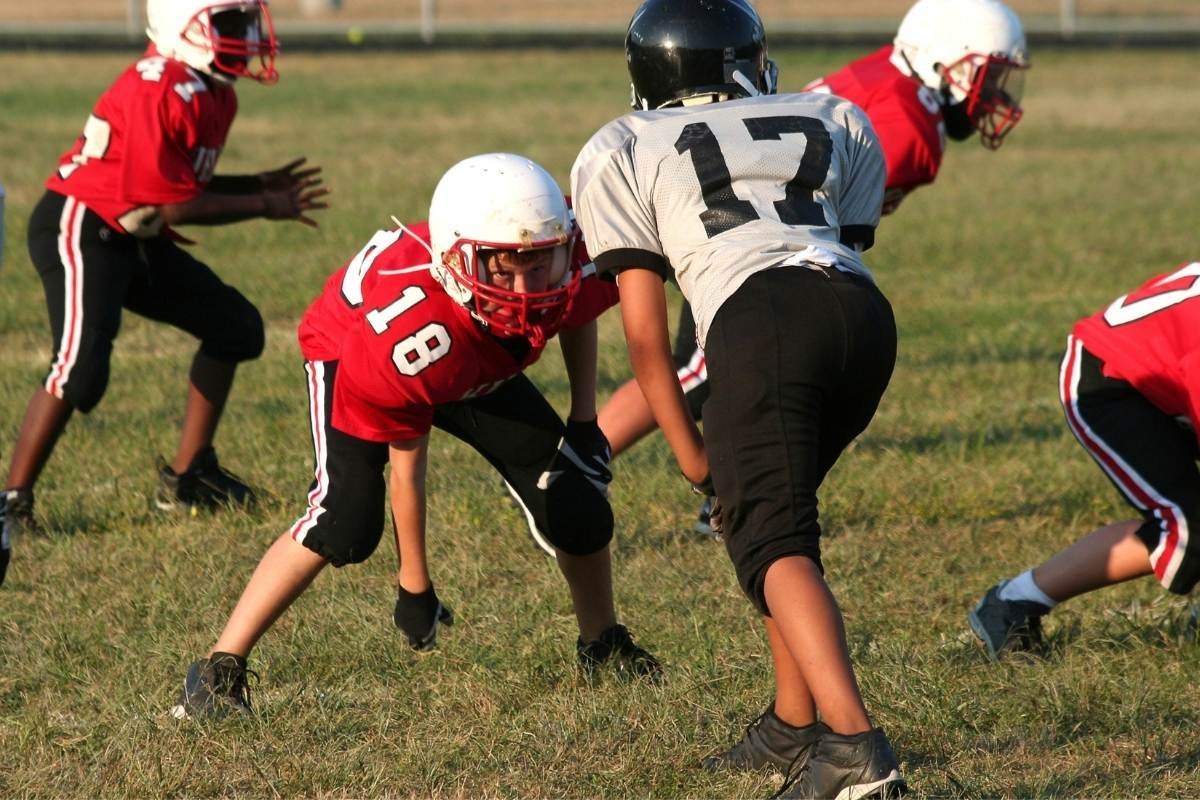First-ever systematic review of youth football concussion incidence rates and prevention strategies
This article was initially published in our Concussion Update newsletter; please consider subscribing.
Mark Patrick Pankow et al. conducted the first-ever systematic review and meta-analysis of “incidence rates, risk factors, and prevention of concussion and head impacts” in youth tackle football. Their review, published in Sports Medicine, was “also the first to produce a pooled estimate of concussion incidence rate by session type in football (i.e., games, practices).” The authors note that impacts of >80gs have also been recorded among football players as young as seven years old. An impact greater than 80gs (G-force) is the equivalent of the 95th percentile of impacts in D1 college football, meaning that is equivalent to some of the hardest impacts in D1 college football.
Pankow et al. included 58 articles in their review and 20 in their meta-analysis from a pool of 1,911 studies. Their investigation found that concussions occurred slightly more often in games than practices in studies that measured concussion rates in both games and practices (51-57% of concussions transpiring in games). However, more head impacts (as opposed to concussions) were sustained in practices than in games over the course of a season. “Across both levels of play (youth and high school), player-to-player contact was responsible for a majority of concussions (80–91%).”
Among players who sustained a concussion during a game, those whose injury was diagnosed that day experienced roughly half as many total head impacts (16.4 ± 15.1) as those whose diagnosis was delayed (32.9 ± 24.9). Linemen sustained the most head impacts, but skill position players like running backs and defensive backs had the highest acceleration head impacts. Teams with “run-first” offenses recorded more head impacts than teams with “pass-first” offenses, though impacts on the “pass-first” teams were higher-severity. Overall “having a lifetime history of concussion increased the risk of sustaining a concussion four- to sevenfold.”
When examining the studies for modifiable risk factors, the authors found that concussion rates were twice as high for high school games played on grass compared to games played on turf. They also found that a “helmet with a thicker zygoma (cheekbone) pad reduced the risk of concussion by 64% compared with a control helmet with a thinner zygoma pad.” In general, poor helmet fit contributed to increased concussion symptoms and symptom duration.
Pankow et al. found that both the Heads Up Football preventative program and limited contact reduced the number of concussions in both youth and high school football. Most-critically, “Limiting contact practices in high schools to 2 days per week reduced practice head impacts per player-season by 42%, and limiting full contact in practice to 75 min per week in the second week of the season and 60 min in week 3 and beyond resulted in a 54% decrease in the practice-related concussion rate.” This research provides vital insights into concussion and head impact patterns in youth and high school football, as well as validation for ways to reduce head impacts and concussions during practices and games.

